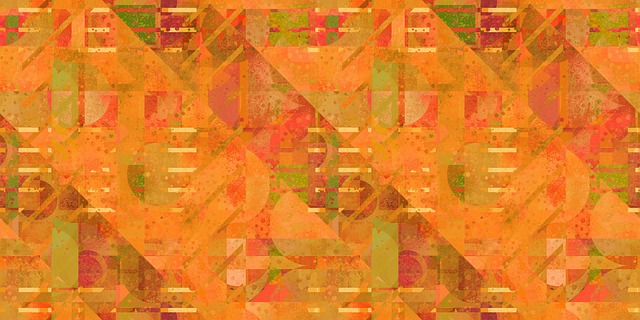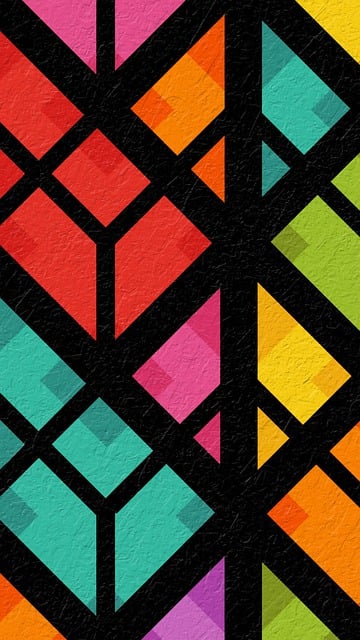In today's digital era, Graphic Design is crucial for e-commerce success, creating visually engaging content that captures users' attention, communicates brand essence, and drives sales. Well-crafted graphics enhance product appeal, simplify complex details, and build trust in online stores. Through color psychology, typography, and retouching techniques, graphic design distinguishes brands on crowded platforms. It optimizes images for fast loading, enhances user experience, and aligns with SEO best practices. Leaders like Amazon and Shopify exemplify this by using high-contrast colors, clear typography, and vibrant visuals to boost engagement and conversions. Accessible tools like Adobe Photoshop, Canva, Shutterstock, and Figma enable businesses to create high-quality graphics efficiently.
In today’s digital landscape, Graphic Design plays a pivotal role in shaping the success of e-commerce businesses. From enhancing user experience to driving sales, visually compelling designs are crucial for capturing attention and fostering brand loyalty. This article delves into the essential aspects of graphic design for e-commerce, exploring strategies that range from visual branding and psychological color/typography choices to optimizing graphics for web performance and SEO. We’ll also showcase successful case studies, highlight useful tools, and provide valuable resources to elevate your e-commerce design game.
Understanding the Role of Graphic Design in E-commerce

In today’s digital landscape, graphic design plays a pivotal role in e-commerce success. It’s not just about making things look pretty; it’s about creating visually compelling content that engages users, communicates brand identity, and ultimately drives sales. Well-designed graphics can enhance product appeal, simplify complex information, and foster trust in online stores. They act as visual anchors that guide shoppers through the digital shelf, making products more memorable and desirable.
E-commerce platforms are often crowded and competitive, with countless options vying for customers’ attention. Graphic design steps in to differentiate brands and products. From product images and logo designs to website layouts and advertising materials, each element contributes to a seamless and enjoyable user experience. By leveraging visual storytelling techniques, graphic designers help e-commerce businesses cut through the noise, build brand recognition, and convert browsers into buyers.
Visual Branding: Creating a Memorable Online Presence

In today’s digital landscape, a strong visual branding is crucial for e-commerce success. Graphic design plays a pivotal role in creating a memorable and distinctive online presence that captivates customers. Through thoughtful use of color schemes, typography, and imagery, graphic designers can transform a brand’s identity into a visually appealing experience that resonates with the target audience.
A well-designed visual branding ensures that an e-commerce site stands out from competitors, fostering brand recognition and loyalty. It tells a story about the company’s values, personality, and unique selling points, making it easier for customers to connect with the brand. This strategic approach to graphic design goes beyond aesthetics; it drives engagement, encourages browsing, and ultimately boosts sales, proving that visual storytelling is a powerful tool in the e-commerce arena.
The Psychology Behind Color and Typography Choices

The choice of colors and typography in graphic design for e-commerce isn’t merely aesthetic; it’s rooted in deep psychological principles. Colors evoke emotions, with warm hues like red and orange stirring excitement and urgency, making them ideal for calls-to-action (CTAs) to drive sales. In contrast, cool tones such as blue inspire trust and calmness, often used in brands aiming to convey reliability and security. Typography, similarly, influences how viewers perceive a brand. Serif fonts tend to evoke tradition and credibility, while sans-serif fonts convey modernity and simplicity. The interplay of these elements shapes user experience, guiding attention towards key product features and encouraging desired actions, ultimately enhancing conversion rates in the e-commerce space.
Graphic design for e-commerce must also consider how color and typography interact within a digital environment. High contrast ensures readability, while consistent typographic styles across pages build brand recognition. Moreover, aligning these design choices with target audience preferences and marketing goals is paramount. Effective use of color and type can create a compelling visual narrative that resonates with viewers, making products more appealing and increasing the likelihood of conversions.
Enhancing Product Images with Creative Retouching Techniques

In the realm of e-commerce, where first impressions are everything, Graphic Design plays a pivotal role in capturing and retaining customer attention. Enhancing product images through creative retouching techniques is an art that can transform mundane visuals into captivating displays. Skilled graphic designers employ various tools and methods to optimize photos, ensuring they stand out amidst the digital hustle and bustle. From adjusting lighting and color schemes to adding subtle textures and effects, these techniques not only improve aesthetics but also provide a deeper understanding of the product, fostering confidence in potential buyers.
By leveraging retouching, e-commerce brands can present their products in the best possible light, creating a visually appealing experience that encourages conversions. Whether it’s showcasing intricate details or simulating real-life scenarios, creative retouching adds depth and dimension to flat images. This strategic approach ensures that product photography becomes an engaging narrative, leaving a lasting impression on online shoppers and setting the brand apart in a competitive market.
Designing Compelling Call-to-Action Buttons (CTAs)

In the realm of e-commerce, where digital landscapes compete for attention, graphic design plays a pivotal role in capturing customers’ interest and guiding them through the purchasing journey. One of the most effective tools at a designer’s disposal is the call-to-action (CTA) button. Compelling CTAs are not just buttons; they are strategic elements that prompt users to take immediate action, whether it’s “Add to Cart,” “Shop Now,” or “Sign Up.” A well-designed CTA can significantly enhance user engagement and conversion rates.
Designers must consider the visual aesthetics, color psychology, and placement of CTAs to ensure they stand out amidst the hustle and bustle of an e-commerce site. Using contrasting colors, clear typography, and concise text, designers can create CTAs that resonate with their target audience. In today’s digital era, where folks are used to instant gratification, a well-crafted CTA can be a game-changer, revolutionizing the user experience and driving sales.
Optimizing Graphics for Web Performance and SEO

In the realm of e-commerce, where visual appeal meets functional necessity, graphic design plays a pivotal role in attracting and retaining customers. However, beyond aesthetics, optimizing graphics for web performance and SEO is paramount. Efficient image formats like JPEG, PNG, and WebP, along with strategic compression techniques, ensure that visuals load swiftly, enhancing user experience and reducing bounce rates.
This optimization extends to alt tags, which provide textual alternatives for images, boosting accessibility and search engine visibility. Search engines crawl and index these descriptions, making your e-commerce site more discoverable in image search results. Thus, a well-planned graphic design strategy not only captivates visitors but also aligns with SEO best practices, driving organic traffic and conversions.
Case Studies: Successful E-commerce Brands and Their Design Strategies

Successful e-commerce brands have long understood the power of graphic design in creating visually appealing and user-friendly experiences. Case studies show that leading online retailers like Amazon and Shopify excel not just through their extensive product offerings but also thanks to their meticulous design strategies. Amazon, for instance, employs high-contrast colors and clear typography to enhance scanability, making it easy for users to quickly find products. Their consistent use of visual hierarchy ensures that the most important information—product images, pricing, and reviews—is instantly accessible.
Shopify, on the other hand, leverages graphic design to create a sense of brand identity and engagement. They utilize vibrant visuals and white space effectively to showcase products in an aesthetically pleasing manner. By incorporating interactive elements like animated banners and video backgrounds, Shopify not only captures attention but also improves user retention. These strategies demonstrate how powerful Graphic Design can be in driving conversions and fostering customer loyalty in the highly competitive e-commerce landscape.
Tools and Resources for Efficient Graphic Design in E-commerce

In today’s digital era, efficient graphic design for e-commerce is paramount to success. Thankfully, a plethora of tools and resources are available to streamline the process. Design software like Adobe Photoshop, Illustrator, and InDesign remain industry standards, offering robust features for creating visually appealing product images, logos, and marketing collateral. For more accessible options, Canva provides user-friendly templates and an intuitive drag-and-drop interface, making it ideal for small businesses and startups.
Additionally, stock photo websites like Shutterstock, Unsplash, and Pexels offer a vast library of high-quality images that can be licensed for commercial use. These platforms save time and money by eliminating the need for in-house photography or creating graphics from scratch. Furthermore, design collaboration tools such as Figma and Sketch enable seamless teamwork, allowing designers to work simultaneously on projects, share mockups, and gather feedback efficiently. Embracing these tools empowers e-commerce businesses to maintain a strong visual presence and enhance their overall brand identity.
